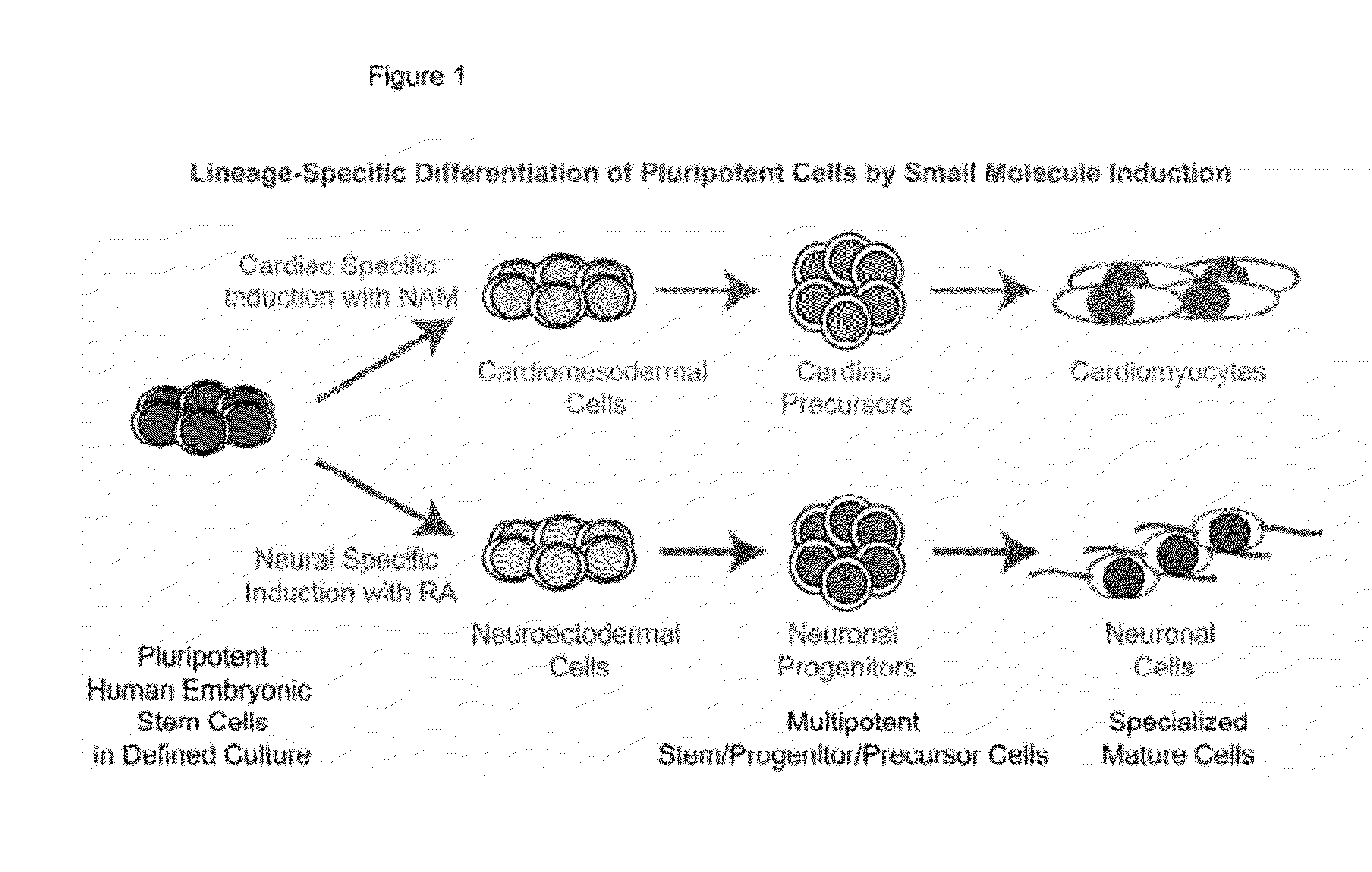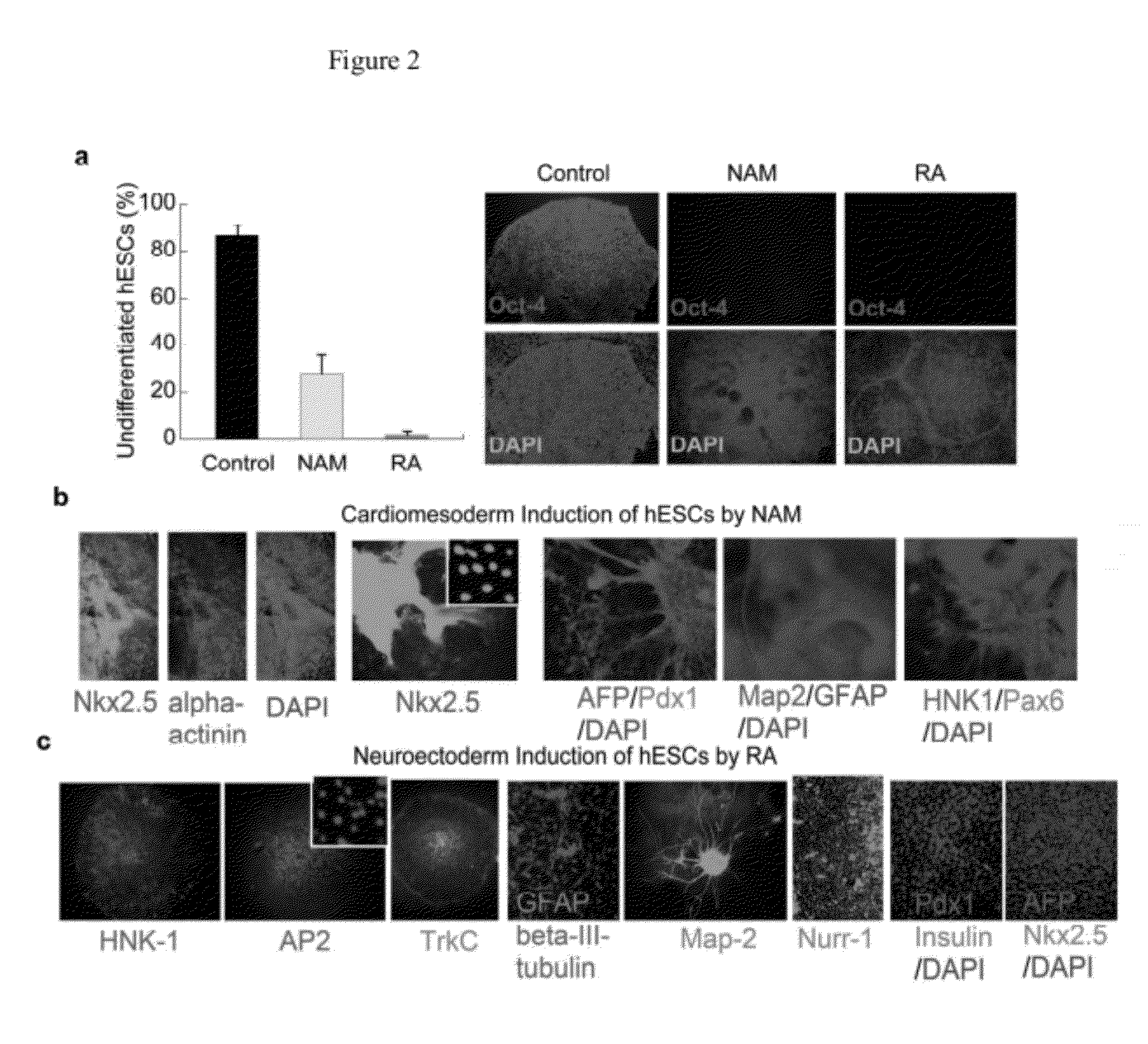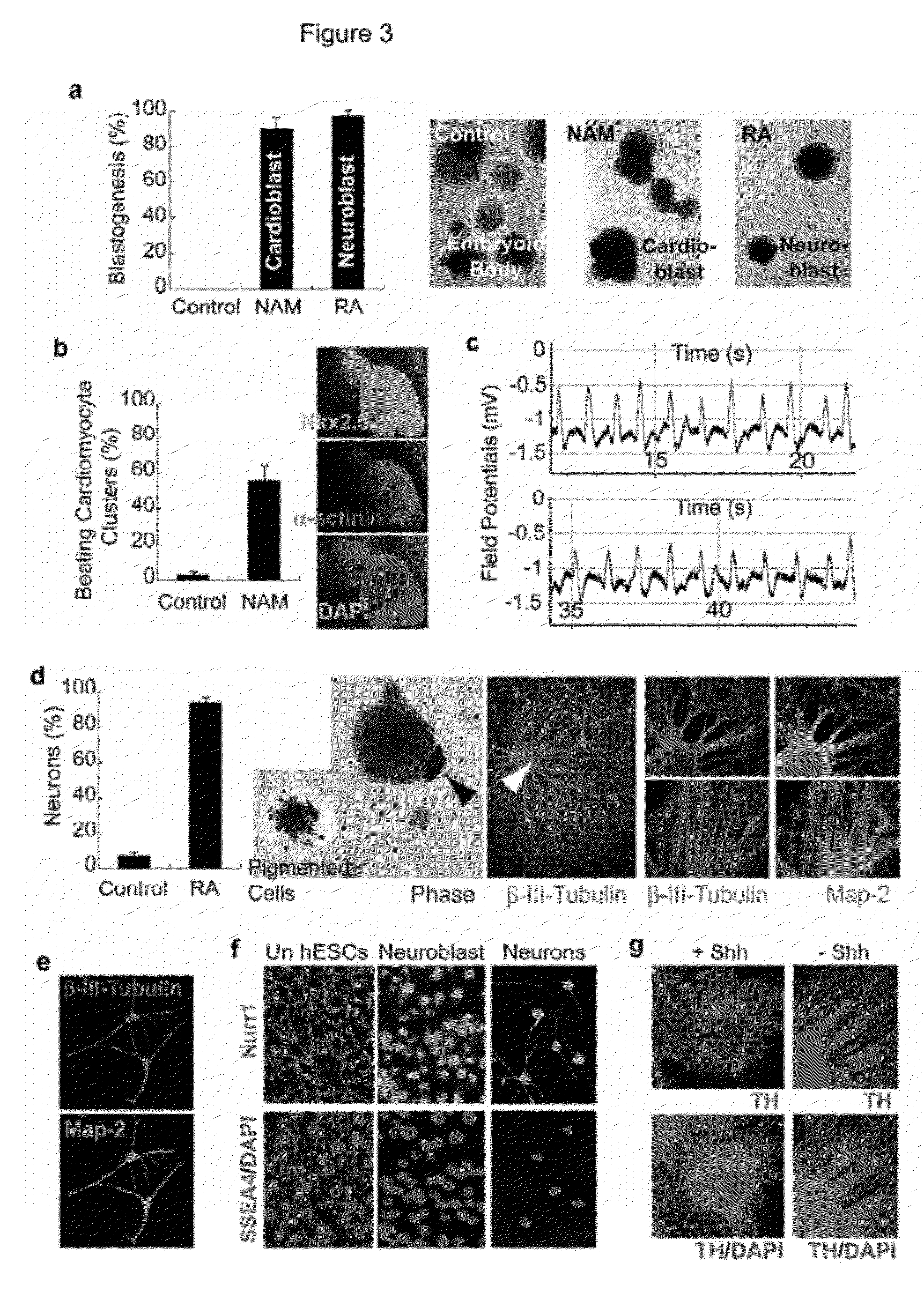Technologies, Methods, and Products of Small Molecule Directed Tissue and Organ Regeneration from Human Pluripotent Stem Cells
a technology of human pluripotent stem cells and directed tissue, which is applied in the field of human embryonic stem cell biology and regenerative medicine, can solve the problems of low efficiency, uncontrollable and unreliable emergence of desired phenotypes, and inefficient differentiation, and achieves high efficiency, neuronal lineage specificity, and purity. high efficiency
- Summary
- Abstract
- Description
- Claims
- Application Information
AI Technical Summary
Benefits of technology
Problems solved by technology
Method used
Image
Examples
Embodiment Construction
[0070]Pluripotent human embryonic stem cells (hESCs) hold great promise for restoring cell, tissue, and organ function. However, realizing the developmental and therapeutic potential of hESCs has been hindered by the inefficiency and instability of generating desired cell types from pluripotent cells through multi-lineage differentiation. This instant invention is based on the discovery that pluripotent hESCs maintained under the defined culture conditions (i.e., feeder-, serum-, and conditioned-medium-free) can be uniformly converted into a neural lineage or a cardiac lineage by simple provision of small molecules. In particular, retinoic acid (RA) was identified sufficient to induce the specification of neuroectoderm direct from the pluripotent state of hESCs in a defined platform by promoting nuclear translocation of the neuronal-specific transcription factor Nurr-1 and trigger the progression to human neuronal progenitors and human neurons of the developing CNS in high efficienc...
PUM
| Property | Measurement | Unit |
|---|---|---|
| Electromechanical integration | aaaaa | aaaaa |
| plasticity | aaaaa | aaaaa |
| purity | aaaaa | aaaaa |
Abstract
Description
Claims
Application Information
 Login to View More
Login to View More - R&D
- Intellectual Property
- Life Sciences
- Materials
- Tech Scout
- Unparalleled Data Quality
- Higher Quality Content
- 60% Fewer Hallucinations
Browse by: Latest US Patents, China's latest patents, Technical Efficacy Thesaurus, Application Domain, Technology Topic, Popular Technical Reports.
© 2025 PatSnap. All rights reserved.Legal|Privacy policy|Modern Slavery Act Transparency Statement|Sitemap|About US| Contact US: help@patsnap.com



